Thursday, 21st December 2023
International Energy Agency’s Coal 2023 Report
In News: The annual coal market report from the International Energy Agency (IEA) suggested an impending structural decline by 2026 in the global trajectory of coal.

Key Report Highlights
- Trends in Global Coal Demand
- In the midst of the global energy crisis, global coal demand hit a historic high in 2022, rising by 4% to reach 8.42 billion tonnes.
- Asia, particularly China and India, played a pivotal role in driving this growth across power and non-power sectors.
- Regional Demand Dynamics
- China experienced a 4.6% surge in demand, India saw a significant 9% increase, and Indonesia witnessed an impressive 32% rise, fueled by nickel smelters.
- Conversely, the United States faced an 8% decline in coal demand, while Europe exhibited more restrained growth than expected.
- Future Projections and Uncertainties
- Anticipated declines in coal demand are projected for most advanced economies in 2023, with a global decrease of 2.3% by 2026.
- Despite this, global coal consumption is expected to remain above 8 billion tonnes, underscoring its continued role in carbon dioxide emissions.
- Record Production by Leading Producers
- China, India, and Indonesia, the top global coal producers, are poised to break output records in 2023, contributing to over 70% of the world's coal production.
- Rising coal consumption in China and India is attributed to increased demand for electricity and lower hydropower output.
- Factors Influencing Decline
- A shift towards renewable energy sources is a key factor contributing to the expected decline in coal demand.
- The report links this shift to global climate changes, with low-cost solar photovoltaic deployment and anticipated increases in nuclear generation, especially in China, India, and the EU.
- China's Role in Coal Markets
- China's coal consumption is expected to decline in 2024 and stabilize through 2026. Recovery in hydropower output and significant increases in solar PV and wind electricity generation contribute to this trend.
- The pace of China's economic growth and coal use remains uncertain amidst structural changes.
- Global Efforts and Challenges
- While India, Indonesia, and other emerging economies continue to rely on coal for economic growth, reducing the use of 'unabated' coal is crucial to meeting international climate targets.
- This aligns with commitments made at the 28th Conference of Parties (COP28) aiming for a nearly 95% reduction in coal emissions between 2020-2050.
- Shifts in the Coal Industry
- Unexpected surges in coal prices over the past two years have impacted consumers and industry dynamics.
- Despite rising costs, coal mining companies have maintained strong profit margins, allowing diversified mining firms to strategically reinvest profits in other commodities, capitalizing on the anticipated surge in demand linked to the energy transition.
|
UPSC Previous Year Questions Prelims (2019) Q. Consider the following statements:
Which of the statements given above is/are correct? (a) 1 only Ans: (a) Prelims (2013) Q2. Which of the following is/are the characteristic/characteristics of Indian coal?
Select the correct answer using the codes given below: (a) 1 and 2 only Ans: (a) Prelims (2013) Q3. Consider the following statements:
Which of the statements given above are correct? (a) 1, 2, 4 and 5 Ans: (b) Mains (2017) Q. “In spite of adverse environmental impact, coal mining is still inevitable for development”. Discuss. |
Source: TH
Climate Change Performance Index 2024
In News: Securing the 7th position in the 2024 Climate Change Performance Index (CCPI), India highlights its significant role and contributions to global initiatives addressing climate change.
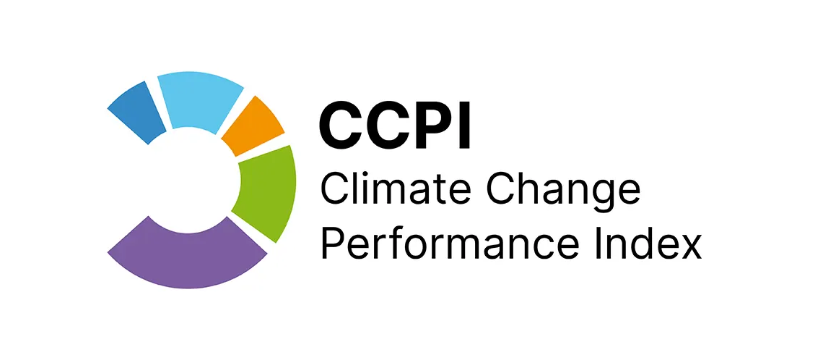
Major Insights from CCPI 2024
- About CCPI
- The Climate Change Performance Index (CCPI), released annually since 2005, serves as an independent tool to monitor countries' climate protection performance.
- Published by Germanwatch, the NewClimate Institute, and Climate Action Network International, it evaluates 63 countries and the EU, accounting for over 90% of global greenhouse gas emissions.
- Performance Metrics
- Evaluated across four categories—Greenhouse Gas Emissions (40%), Renewable Energy (20%), Energy Use (20%), and Climate Policy (20%)—no country achieved an overall very high rating. Denmark, Estonia, and the Philippines secured top positions, with India advancing to the 7th spot.
- India’s Ranking and Scores
- India's 7th position in CCPI 2024, up from 8th in 2023, places it effectively 4th globally due to vacant top positions.
- Noteworthy scores include 9th in GHG Emissions, 10th in Energy Use, and 37th in Renewable Energy, reflecting a slight decline from the previous year.
- Global Context and G20 Analysis
- The CCPI report unveils a concerning trend of increasing global GHG emissions in 2022, with only three G20 members—India (7th), Germany (14th), and the EU (16th)—marked as high performers.
- Developed countries, including the UK and the US, displayed poorer performances than in CCPI 2023, indicating a lack of substantial progress in countering climate change.
Challenges Related to Climate Change in India
- Water Scarcity
- India faces a threat to water security due to changing rainfall patterns and melting glaciers, with estimates indicating a potential two-fold demand-supply gap by 2030.
- Agricultural Vulnerability
- Climate change disrupts crop patterns, leading to reduced yields and food security challenges, causing annual crop losses of about 0.25% of India's GDP.
- Rising Sea Levels
- Coastal regions, including major cities like Mumbai and Kolkata, are at risk from rising sea levels, potentially causing significant land loss by 2050.
- Air Pollution
- India grapples with severe air quality issues, exacerbated by climate change, with PM2.5 concentrations exceeding recommended levels.
- Urban Heat Island Effect
- The urban heat island effect elevates temperatures in cities, contributing to heatwaves and health risks, impacting vulnerable populations.
The Way Forward
- Climate-Resilient Crop Varieties
- Invest in research for genetically modified or selectively bred crop varieties resilient to climate change, ensuring food security.
- Vertical Forests in Urban Areas
- Construct vertical forests in urban spaces to enhance green cover, biodiversity, and mitigate the urban heat island effect.
- Floating Solar Farms
- Develop floating solar farms on water bodies to generate renewable energy, optimizing land use and reducing water surface evaporation.
- Community-Based Climate Insurance
- Implement community-driven climate insurance schemes involving local communities in risk-sharing and climate adaptation.
- Blockchain for Carbon Credits
- Utilize blockchain technology for transparent and efficient carbon credit systems, encouraging investments in emission reduction projects.
- Seaweed Farming for Carbon Capture
- Promote seaweed farming as a method of carbon sequestration, aiding climate change mitigation.
- Incentivizing Climate-Smart Transportation
- Implement incentive-based programs to encourage climate-smart transportation, such as tax benefits for electric vehicles or cycling infrastructure.
|
UPSC Previous Year Questions Prelims (2021) Q. In the context of India’s preparation for Climate-Smart Agriculture, consider the following statements:
Which of the statements given above are correct? (a) 1 and 2 only Ans: (d) Prelims (2016) Q.2 Which of the following best describes/describe the aim of ‘Green India Mission’ of the Government of India?
Select the correct answer using the code given below. (a) 1 only Ans: (c) Prelims (2017) Q.3 With reference to ‘Global Climate Change Alliance’, which of the following statements is/are correct?
Select the correct answer using the code given below: (a) 1 and 2 only Ans: (a) Mains (2021) Q.1 Describe the major outcomes of the 26th session of the Conference of the Parties (COP) to the United Nations Framework Convention on Climate Change (UNFCCC). What are the commitments made by India in this conference? Mains (2017) Q.2 ‘Climate Change’ is a global problem. How will India be affected by climate change? How Himalayan and coastal states of India be affected by climate change? |
Source: DTE
Greenwashing - Edukemy Current Affairs
In News: Advertisements from Air France, Lufthansa, and Etihad have been prohibited by the United Kingdom's Advertising Standards Authority (ASA).
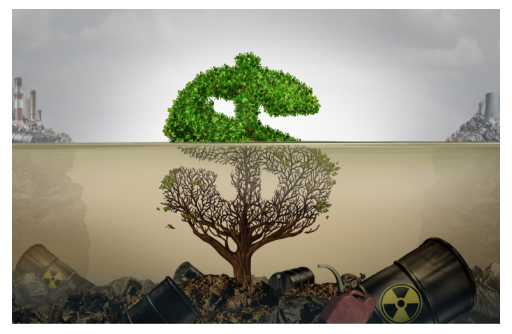
Understanding Greenwashing
- Introduction
- Coined by American environmentalist Jay Westerveld in 1986, the term "greenwashing" describes a deceptive practice where companies and governments overstate their environmental efforts, often providing misleading information or unverifiable claims to capitalize on the demand for eco-friendly products.
- Examples of Greenwashing
- Notable instances of greenwashing include the Volkswagen scandal, where the car company cheated emissions testing, and accusations against multinational corporations like Shell, BP, and Coca-Cola.
- Such cases highlight the deceptive labeling of activities as environmentally friendly without concrete evidence.
- Concerns
- Greenwashing poses risks such as diluting the authenticity of climate goals, providing unwarranted recognition to entities engaging in deceptive practices, and distorting markets.
- The absence of comprehensive regulations allows greenwashing to persist, challenging the integrity of carbon credit systems, particularly in informal markets.
Global Initiatives Against Greenwashing
- At COP27, the UN Secretary-General emphasized zero tolerance for greenwashing, urging private corporations to rectify their practices.
- The European Union addressed this by approving the world's first green bond standards, promoting transparency and directing funds to sustainable activities.
Laws in India Targeting Greenwashing
- In India, the Consumer Protection Act of 2019 designates greenwashing as an unfair trade practice, imposing penalties for deceptive claims.
- SEBI's guidelines for green debt securities, issued in February 2023, aim to ensure transparency and prevent greenwashing.
- The ASCI, a voluntary regulatory body, monitors advertising practices related to greenwashing.
The Way Forward
To combat greenwashing, there is a need to hold companies accountable for their environmental actions, demand transparency from businesses regarding their environmental policies, and support initiatives with proven environmental and social responsibility records. Implementing comprehensive regulations for environmental claims is crucial for ensuring accountability and transparency.
|
UPSC Previous Year Questions Prelims (2022) Q. Which one of the following best describes the term “greenwashing:”? (a) Conveying a false impression that a company’s products are eco-friendly and environmentally sound. (b) Non-Inclusion of ecological/ environmental costs in the Annual Financial Statements of a country (c) Ignoring the disastrous ecological consequences while undertaking infrastructure development. (d) Making mandatory provisions for environmental costs in a government project/programme Ans: (a) Prelims (2011) Q. Regarding “carbon credits”, which one of the following statements is not correct? (a) The carbon credit system was ratified in conjunction with the Kyoto Protocol (b) Carbon credits are awarded to countries or groups that have reduced greenhouse gases below their emission quota (c) The goal of the carbon credit system is to limit the increase of carbon dioxide emission (d) Carbon credits are traded at a price fixed from time to time by the United Nations Environment Programme. Ans: (d) |
Source: IE
Advocates Amendment Bill, 2023
In News: The Lok Sabha and Rajya Sabha recently passed the Advocates Amendment Bill, 2023, with the aim of eliminating 'touts' from the legal system.
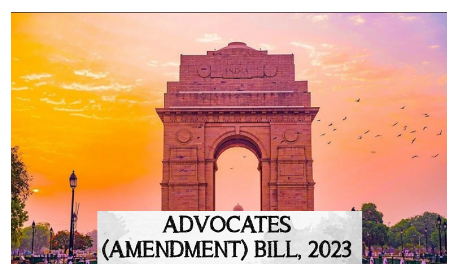
Key Highlights of the Advocates Amendment Bill, 2023
- Touts
- The bill empowers High Courts, district judges, sessions judges, district magistrates, and revenue officers to formulate and publish lists of touts.
- A tout is defined as an individual who either seeks or facilitates the employment of a legal practitioner in legal matters for remuneration and frequents specific locations to secure such employment.
- The courts or judges have the authority to bar individuals listed as touts from their premises.
- Preparation of Lists
- Authorities with the mandate to create tout lists may instruct subordinate courts to conduct inquiries into individuals suspected of being touts.
- If proven, their names may be added to the tout list. Inclusion in these lists requires individuals to be given an opportunity to contest their listing.
- Penalty
- Acting as a tout while listed carries penalties of imprisonment up to three months, a fine of up to Rs 500, or both.
Advocates Act, 1961
- The Advocates Act, 1961, was enacted to revise and consolidate laws related to legal practitioners and establish Bar Councils and an All-India Bar.
- While repealing much of the Legal Practitioners Act, 1879, it retained certain provisions concerning its scope, definitions, and the authority to create and publish tout lists.
|
UPSC Previous Year Questions Prelims (2016) Q. With reference to India, consider the following statements:
Which of the statements given above is/are correct? (a) 1 only Ans: (b) |
Source: IE
INS Kochi - Edukemy Current Affairs
In News: The Indian destroyer INS Kochi carried out the evacuation of one of the 18 sailors who were on board the hijacked commercial vessel MV Ruen off the coast of Somalia.

INS Kochi: A Kolkata-class Stealth Guided-Missile Destroyer
Overview
- INS Kochi, the second vessel of the Kolkata-class stealth guided-missile destroyers developed under Project 15A, was meticulously crafted at Mazagon Dock Limited (MDL) in Mumbai.
- It entered service with the Indian Navy on September 30, 2015.
Specifications
- Boasting a length of 164 meters and a width of around 17 meters, INS Kochi exhibits a full load displacement of 7500 tonnes.
- Its propulsion system comprises a Combined Gas and Gas (COGAG) setup, featuring four formidable reversible gas turbines, enabling speeds exceeding 30 knots.
- The ship accommodates a crew of 40 officers and 350 sailors.
Advanced Arsenal
- Equipped with the potent BrahMos Surface-to-Surface Missile, INS Kochi stands out in its offensive capabilities.
- The vessel houses an indigenous anti-submarine warfare suite, showcasing innovations like Indigenous Rocket Launchers (IRL), Indigenous Twin-Tube Torpedo Launchers (ITTL), and a cutting-edge bow-mounted New Generation HUMSA Sonar.
Combat Management System
- Integrating state-of-the-art technology, INS Kochi is equipped with the Combat Management System (CMS-15A), seamlessly connecting onboard weapons and sensors.
- The vessel is also configured to operate two helicopters, either Seaking or Chetak, enhancing its operational versatility.
Source: TOI
Blue dragons - Edukemy Current Affairs
In News: Blue dragons (Glaucus atlanticus) were recently sighted on the beach and in the waters near the shore in Besant Nagar, Chennai.

Blue Dragons: Extraordinary Nudibranchs of the Seas
- Overview
- The blue dragon, scientifically known as Glaucus atlanticus, stands out as a remarkable nudibranch mollusk.
- Commonly referred to as blue sea slugs, blue angels, and sea swallows, these creatures typically reach a modest size, seldom growing beyond three centimeters in length.
- Unique Features
- To stay afloat, the blue dragon ingeniously stores an air bubble in its stomach.
- This adaptation allows it to drift gracefully on the surface of the Atlantic, Pacific, and Indian oceans, primarily in temperate and tropical waters.
- Diet
- Feeding on venomous siphonophores like the Portuguese man-o-war and bluebottle, found in ocean surface waters, blue dragons exhibit a remarkable immunity to the stinging cells (nematocysts) of these jellyfish-like organisms.
- They incorporate these cells into finger-like structures protruding from their bodies, offering potent protection against predators.
- Venomous Nature
- While the blue dragon itself is not venomous, it stores the stinging nematocysts from its prey.
- A sting from this creature can cause various issues, particularly in children and the elderly, including nausea, pain, vomiting, acute allergic contact dermatitis, and post-inflammatory hyperpigmentation.
- Reproductive Traits
- Blue dragons are hermaphrodites, possessing both male and female reproductive organs, contributing to the uniqueness of these captivating sea creatures.
Source: IE
Mullaperiyar Dam - Edukemy Current Affairs
In News: Tamil Nadu recently reversed the decision to open the spillway shutters of the Mullaperiyar dam due to diminished rainfall and a decrease in the inflow of water to the dam.
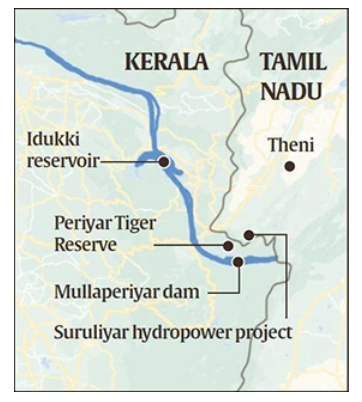
Mullaperiyar Dam: A Historical Marvel
- Overview
- The Mullaperiyar Dam is a masonry gravity dam positioned on the Periyar River in Thekkady, Idukki district, Kerala.
- Nestled at an elevation of 881 meters above sea level, it graces the Cardamom Hills of the Western Ghats, where the Mullayar and Periyar rivers converge.
- Construction and Structure
- Initiated in 1887 and completed in 1895 under the leadership of the British Corps of Royal Engineers, led by Pennycuick, the dam stands with a height of 53.6 meters from the foundation and a length of 365.7 meters. Crafted with limestone and "Surkhi" (a blend of burnt brick powder, sugar, and calcium oxide), it is a testament to engineering excellence.
- Purpose
- Designed to redirect the waters of the west-flowing River Periyar eastward, the dam serves the arid rain shadow regions of Theni, Madurai, Sivaganga, and Ramanathapuram districts in Tamil Nadu.
- This visionary project aimed at addressing regional water needs.
- Surrounding Environment
- The Periyar National Park envelops the reservoir formed by the dam, adding an ecological dimension to its existence.
- Operational Dynamics
- While geographically situated in Kerala, the operational reins of the dam are in the hands of Tamil Nadu, a legacy of a 999-year lease agreement established during the British era.
- This unique arrangement symbolizes the historical and operational intricacies of the Mullaperiyar Dam.
Source: TH
SAMAR Air Defence Missile System
In News: Recently, the Indian Air Force (IAF) achieved a successful test firing of the 'SAMAR' air defense missile system.

SAMAR Air Defence Missile System Overview
- Development and Range
- The SAMAR (Surface to Air Missile for Assured Retaliation) is a short-range air-defense system crafted by a unit under the Indian Air Force’s Maintenance Command.
- It boasts an impressive range of 10–12 km, designed to counter low-flying aerial threats effectively.
- Speed and Engagement Capability
- SAMAR can engage aerial targets with missiles operating at speeds ranging from 2 to 2.5 Mach.
- This capability makes it adept at countering a variety of airborne threats.
- Missile Source and Launch Platform
- SAMAR-1 utilizes the IAF's existing inventory of Russian Vympel R-73E infrared‐guided air-to-air missiles (AAMs) that have reached the end of their shelf life.
- The system incorporates a twin-turret launch platform with the flexibility to launch missiles in both single and salvo modes, adapting to different threat scenarios.
- Optical Guidance and Replacement Role
- Each missile launcher is equipped with a visible electro-optic system. SAMAR is positioned to replace aging systems like the improved Pechora and OSA-AK, enhancing the Indian Air Force's air defense capabilities.
Key Insights into Akash Missile (SAM) Defence System
- Indigenous Development
- Akash is a Short-Range Surface-to-Air Missile (SRSAM) Defence System designed and developed by the Defence Research and Development Organisation (DRDO), showcasing India's indigenous technological capabilities.
- Versatile Target Engagement
- Akash is designed to simultaneously engage multiple targets, including unmanned aerial vehicles, fighter aircraft, cruise missiles, and missiles launched from helicopters.
- It possesses Electronic Counter-Counter Measures (ECCM) features, enhancing its effectiveness.
- Flexible Deployment and Transport
- The entire Akash weapon system is configured for deployment from both static and mobile platforms, such as battle tanks and wheeled trucks.
- Its road and rail transportability, coupled with quick mobilization capabilities, makes it a versatile defense asset.
- Impressive Range
- Akash has the capacity to engage aerial targets up to a range of approximately 25 km, providing a robust defense shield against various airborne threats.
Source: ANI
Andriamamelo Cave - Edukemy Current Affairs
In News: Recently, ancient and distinctive rock art drawings were unearthed in the Andriamamelo Cave situated in western Madagascar.
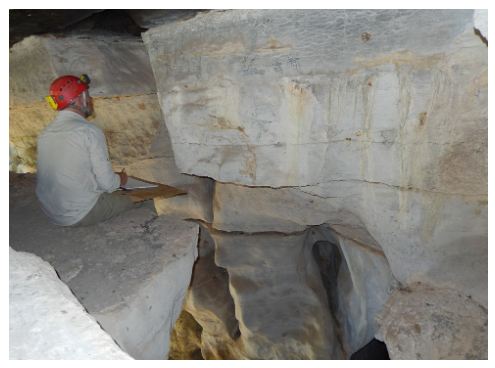
About Andriamamelo Cave
Andriamamelo Cave is located in western Madagascar, within the karstified limestone region of the Paysage Harmonieux Protege de Beanka. This area is part of an extensive karst region that includes the UNESCO World Heritage site Parc National de Bemaraha to the south and the less-explored Antsingimavo karst area to the north.
Key Findings
The cave has revealed significant pictorial art featuring depictions of nature with human-like and animal-like figures. The discoveries in Andriamamelo Cave have provided several surprises, unveiling cultural connections that hint at diverse influences.
- Egyptian Religious Motifs
- Scenes in the cave are directly linked to Egyptian religious motifs from the Ptolemaic period (300-30 BCE).
- Notable depictions include a falcon (Horus), the bird-headed god Thoth, the ostrich goddess Ma`at, and two human-animal figures resembling Anubis, an ancient Egyptian god depicted as a man with a canine head.
- Connections to Ethiopian and Afro-Arab Worlds
- Symbols and writings on the cave walls suggest connections to the Ethiopian and Afro-Arab worlds, indicating cultural influences that traverse geographical boundaries.
- Borneo Cave Art Style
- The prevalent symbology and motifs in the cave evoke a cave art style from Borneo that dates back two millennia, showcasing the intriguing diversity of influences on the ancient artwork.
- Depiction of Extinct Animals
- The drawings include representations of at least three extinct animals of Madagascar: a giant sloth lemur, elephant birds, and a giant tortoise, suggesting a rich ecological and historical context.
These discoveries underscore the significance of Andriamamelo Cave as a repository of ancient art with cultural connections reaching beyond Madagascar's borders.
Source: TH
Late Blight disease - Edukemy Current Affairs
In News: Punjab Agricultural University (PAU) experts recently issued a warning to farmers about the potential threat of late blight disease affecting potato crops.
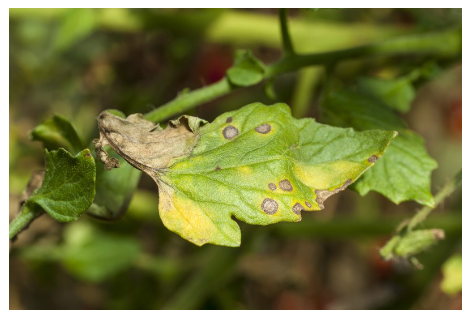
About Late Blight disease
- Late Blight disease, triggered by the fungus Phytophthora infestans, poses a significant threat to potato crops, potentially leading to rapid crop failures if effective control measures are not implemented.
- This disease is particularly prevalent in humid regions with specific temperature conditions.
- The initial symptoms involve small, circular water-soaked spots that can rapidly expand into large, dark lesions, especially during cool and moist weather.
- Prompt destruction of infected crop residue is crucial for controlling the spread of the disease, as both infected tubers and soil can serve as sources of primary infection.
- Vigilant management practices are essential to prevent the persistence and transmission of late blight from one crop to the next.
Source: IE
Levy Taxes on 'HFSS' Foods: A Vital Move for Public Health
In News: According To a Recent Article High Fat Sugar Salt (HFSS) Foods Is a Leading Driver of Global Health Crisis, Triggering Obesity, Diabetes, and Hypertension.

Key Insights from the Global Burden of Diseases Study
- Global Health Crisis Trends
- In 2019, a World Bank report highlighted that a staggering 70% of overweight and obese individuals globally reside in Low- and Middle-Income Countries.
- Notably, the number of overweight or obese people in rural areas worldwide has surged by 55%, challenging the misconception that this health issue is confined to affluent nations and urban communities.
- Health Crisis and Economic Ramifications: The Case of India
- The burden of Non-Communicable Diseases (NCDs) in India has skyrocketed from 38% in 1990 to 65% in 2019.
- Alarming statistics from the global burden of diseases study attribute 1.2 million deaths annually in India to dietary risks alone.
- The economic impact of overweight and obesity in India, estimated at $23 billion in 2017, is projected to escalate to $480 billion by 2060 if unaddressed.
- Shift in Dietary Habits in India
- As the largest producer and consumer of sugar globally, India has witnessed a concerning growth in ultra-processed foods, compounding at an annual rate of 13.4% between 2011 and 2021.
- Approximately 50%-60% of edible sugar, salt, and fat produced in India are consumed by the processed food industry.
- The tripling of sales for snacks and soft drinks, surpassing $30 billion last year, indicates a disturbing trend in dietary habits.
- Implications of India’s Changing Dietary Landscape
- The surge in High Fat Sugar Salt (HFSS) food consumption in India is intricately linked to escalating chronic health conditions such as obesity, diabetes, and high blood pressure.
- This not only strains healthcare systems but also leads to soaring healthcare costs, impacting productivity and economic growth.
Global and Indian Strategies to Mitigate HFSS Food Implications
- Fiscal Measures: Taxation
- Globally, there is a growing trend of utilizing financial measures to address obesity. While taxes on sugary drinks are widespread, taxes on HFSS foods are less common but on the rise.
- Sixteen countries, including Denmark, France, Hungary, Mexico, South Africa, the United Kingdom, and the United States, have implemented dedicated taxes on HFSS foods.
- Colombia’s recent junk food law introduces a progressive levy on ultra-processed foods, offering a model for other nations.
- India's Efforts: The Need for Comprehensive HFSS Taxation
- Due to market failures and negative externalities, HFSS foods contribute to societal costs, especially in increased healthcare expenses.
- Implementing high taxes on HFSS foods can save additional societal costs and spending, discouraging harmful consumption habits.
- Taxes Can Shape Consumer Choices
- Consumers may lack a full understanding of the consequences of their choices due to aggressive marketing.
- Taxes can serve as a focused and effective means to discourage harmful consumption habits, successfully decreasing the purchase of unhealthy products.
- Inconsistencies in GST and Designing Effective HFSS Taxes
- Current Goods and Services Tax (GST) rates on ultra-processed foods lack consideration for nutritional content.
- An effective HFSS tax should apply a non-regressive and fiscally neutral approach, encouraging the industry to produce healthier products.
- Implementing differentiated tax rates based on nutritional quality can incentivize companies to improve offerings and promote healthier choices.
In Conclusion: HFSS Taxation as a Public Health Imperative
- HFSS taxation in India should be perceived not only as an economic or fiscal concern but as a critical public health imperative.
- When coupled with measures like promoting nutrition literacy and effective food labeling, HFSS taxation becomes a powerful tool to combat the escalating epidemic of overweight and obesity, fostering a more sustainable and equitable food system.
Source: TH
Share the article
Edukemy’s Current Affairs Quiz is published with multiple choice questions for UPSC exams
MCQ
Get Latest Updates on Offers, Event dates, and free Mentorship sessions.

Get in touch with our Expert Academic Counsellors 👋
FAQs
UPSC Daily Current Affairs focuses on learning current events on a daily basis. An aspirant needs to study regular and updated information about current events, news, and relevant topics that are important for UPSC aspirants. It covers national and international affairs, government policies, socio-economic issues, science and technology advancements, and more.
UPSC Daily Current Affairs provides aspirants with a concise and comprehensive overview of the latest happenings and developments across various fields. It helps aspirants stay updated with current affairs and provides them with valuable insights and analysis, which are essential for answering questions in the UPSC examinations. It enhances their knowledge, analytical skills, and ability to connect current affairs with the UPSC syllabus.
UPSC Daily Current Affairs covers a wide range of topics, including politics, economics, science and technology, environment, social issues, governance, international relations, and more. It offers news summaries, in-depth analyses, editorials, opinion pieces, and relevant study materials. It also provides practice questions and quizzes to help aspirants test their understanding of current affairs.
Edukemy's UPSC Daily Current Affairs can be accessed through:
- UPSC Daily Current Affairs can be accessed through Current Affairs tab at the top of the Main Page of Edukemy.
- Edukemy Mobile app: The Daily Current Affairs can also be access through Edukemy Mobile App.
- Social media: Follow Edukemy’s official social media accounts or pages that provide UPSC Daily Current Affairs updates, including Facebook, Twitter, or Telegram channels.





